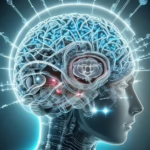The Science of Love: Why We Fall and Stay in Love
Love is a complex and multifaceted emotion that has puzzled humans for centuries. Poets have romanticized it, psychologists have studied it, and neuroscientists have begun to decode its biological roots. But what exactly happens in our brains and bodies when we fall in love? Why do we choose certain partners, and what keeps us connected over time? Through an interdisciplinary lens—incorporating psychology, biology, and sociology—we can begin to unravel the science behind love.
The Chemical Cocktail of Love
Falling in love is more than just an emotional experience; it’s also a chemical reaction. When we fall in love, our brains release a stimulating cocktail of neurotransmitters and hormones that trigger feelings of euphoria and attachment. Key players in this process include:
-
Dopamine: Often referred to as the "feel-good" neurotransmitter, dopamine is released in large amounts when we experience initial attraction. It creates feelings of pleasure and reward, making love feel exhilarating and addictive.
-
Oxytocin and Vasopressin: Known as the "love hormones," oxytocin and vasopressin play crucial roles in forming emotional bonds. Oxytocin is released during physical closeness, such as hugging or cuddling, and is integral to fostering feelings of trust and intimacy.
- Adrenaline: Initially, love can provoke a state of heightened arousal. Adrenaline increases heart rate and enhances our senses, leading to butterflies in the stomach and a sense of urgency in our relationships.
These chemicals create a potent combination that can lead to intense feelings of attraction and attachment, explaining why the early stages of love can feel so overwhelming.
The Stages of Love
Love is not a static experience; it evolves over time. Researchers generally categorize romantic love into three distinct stages:
-
Lust: Driven by sexual attraction fueled by hormones such as testosterone and estrogen, lust kicks off the initial phase of romantic involvement. It is characterized by craving and desire, often prioritizing physical connection.
-
Attraction: This stage is marked by obsessive thoughts about a partner and a deep emotional connection. Dopamine and norepinephrine contribute to feelings of euphoria, reducing our appetite and sleep while making us more energetic and attentive to our partners.
- Attachment: The final stage involves deeper feelings of commitment and companionship. Here, oxytocin and vasopressin come into play, promoting emotional bonding and long-term attachment. This stage is essential for the maintenance of committed relationships and familial support.
Understanding these stages can illuminate why relationships may shift from the passionate highs of infatuation to more stable, nurturing bonds. It highlights the natural progression that many couples experience as they cultivate their connection.
The Psychology of Choice
Falling in love is as much about personal choice and social factors as it is about biology. Psychological theories of attraction suggest several reasons why individuals select certain partners:
-
Familiarity: The mere exposure effect indicates that we tend to develop a preference for people we encounter frequently. Being around someone increases our comfort and attraction to them.
-
Similarity: Shared values, beliefs, and interests can enhance compatibility. People are often drawn to those who reflect their own traits or ideals, fostering a sense of understanding and connection.
-
Reciprocal Liking: We are naturally inclined to develop feelings for those who show an interest in us. Mutual attraction and validation can significantly influence pairing patterns.
- Self-Enhancement: Romantic partners can serve as mirrors, reflecting back our best selves. We may be drawn to individuals who elevate our self-esteem and reinforce our sense of identity.
These psychological underpinnings illustrate that while love may have biological roots, the choices we make and the contexts in which we find ourselves play equally significant roles.
The Challenges of Sustaining Love
Despite the initial intensity of love, sustaining a long-term relationship can be challenging. Factors such as life stress, communication breakdowns, and external pressures can impede emotional bonds. However, research suggests several strategies for nurturing long-lasting love:
-
Communication: Open and honest communication is vital for addressing issues and fostering intimacy. Partners should feel safe expressing their thoughts and emotions, deepening their connection.
-
Quality Time: Regularly making time for each other and engaging in shared activities strengthens the emotional bond. Novel experiences can also rekindle excitement and create new memories.
-
Appreciation: Cultivating gratitude for one another can enhance relationship satisfaction. Acknowledging and expressing appreciation for your partner can help sustain love over time.
- Conflict Resolution: Learning how to navigate disagreements constructively contributes to relationship health. Healthy conflict resolution strategies can prevent resentment from building up and maintain emotional closeness.
Conclusion
The science of love reveals a rich tapestry of biological and psychological factors that influence why we fall and stay in love. Understanding these components allows us to appreciate the complexity of our emotions and reinforces the idea that love, with all its challenges and triumphs, is a critical aspect of what it means to be human. By embracing both the exhilarating highs and the enduring lows of relationships, we can cultivate deeper connections that stand the test of time.
[modern_footnote_source_link]


























Add Comment